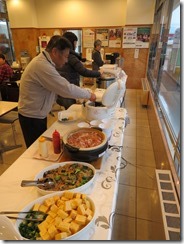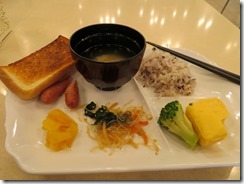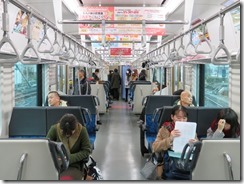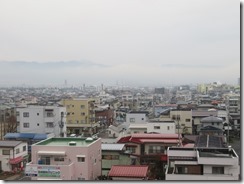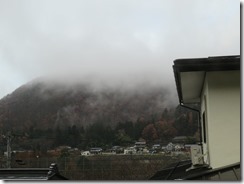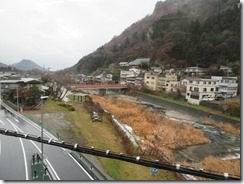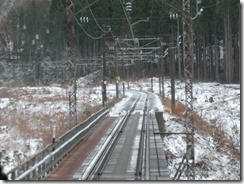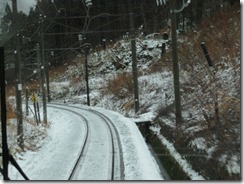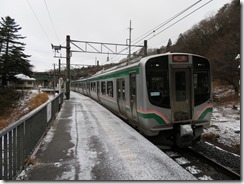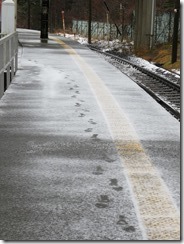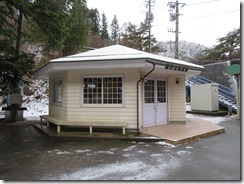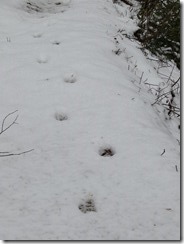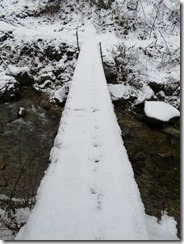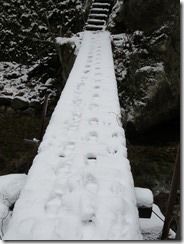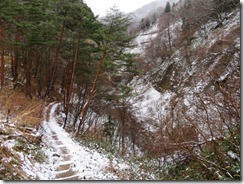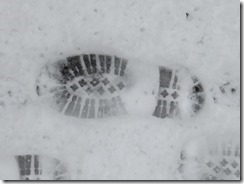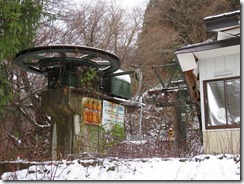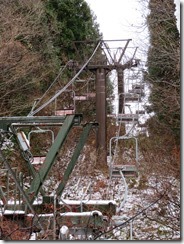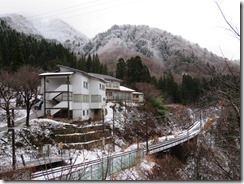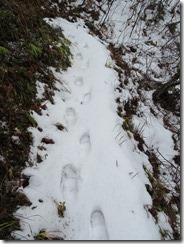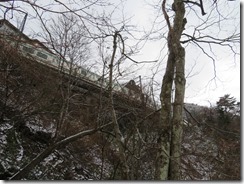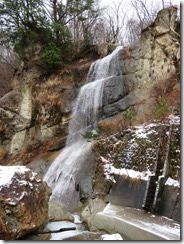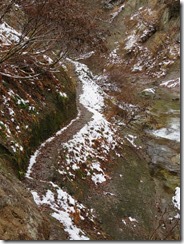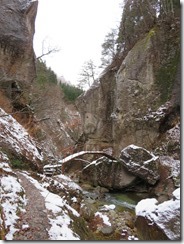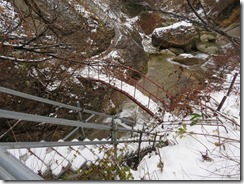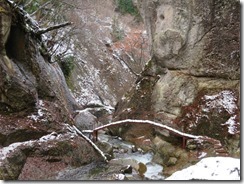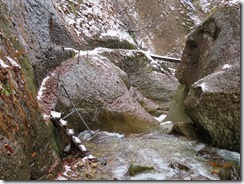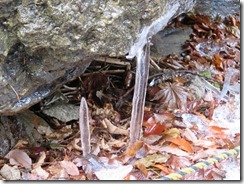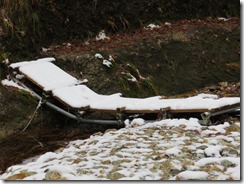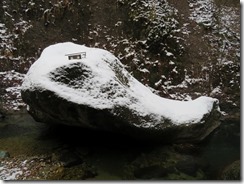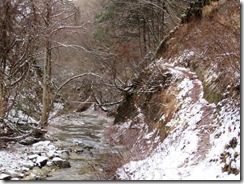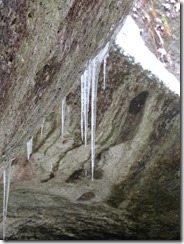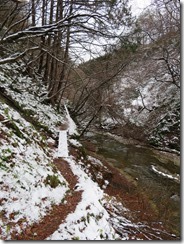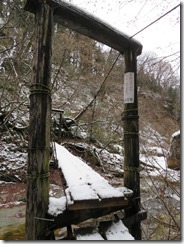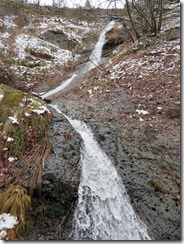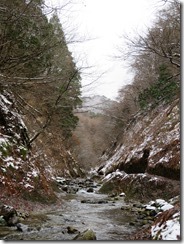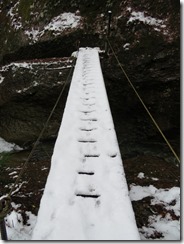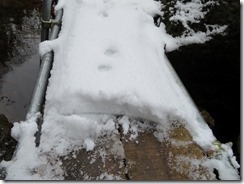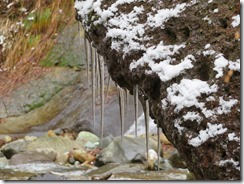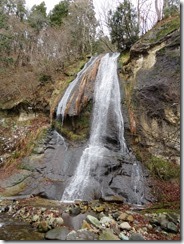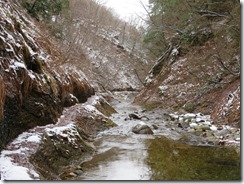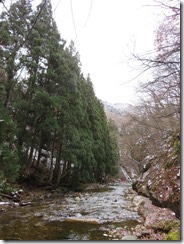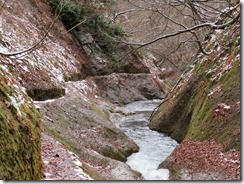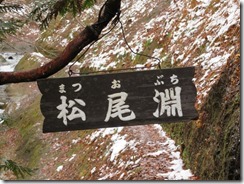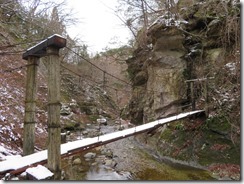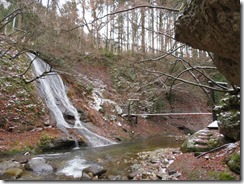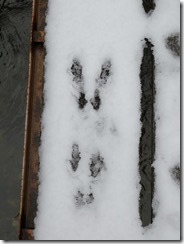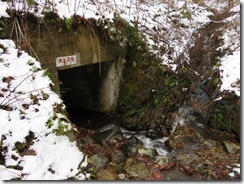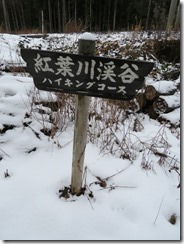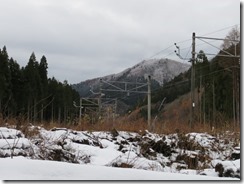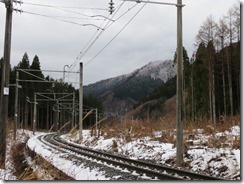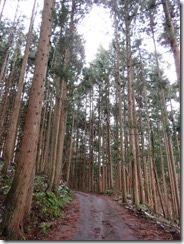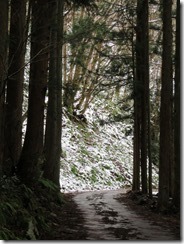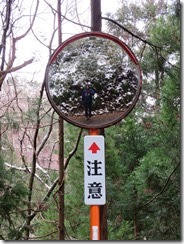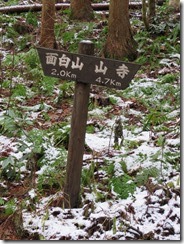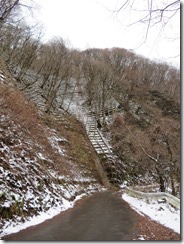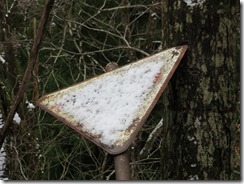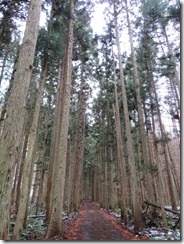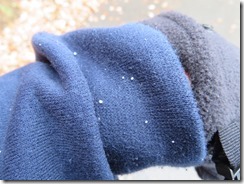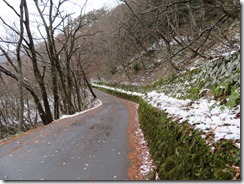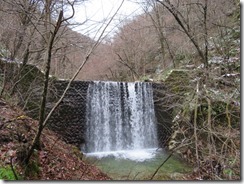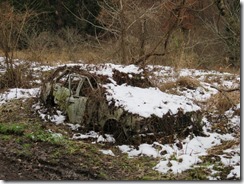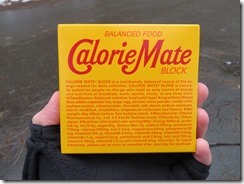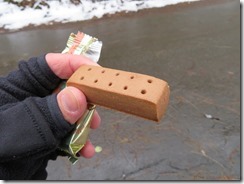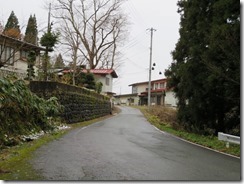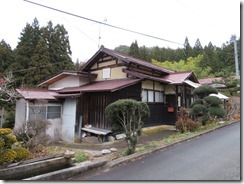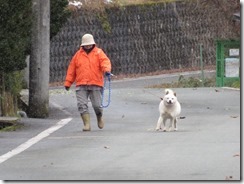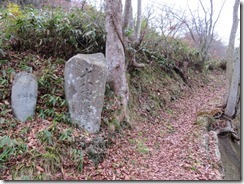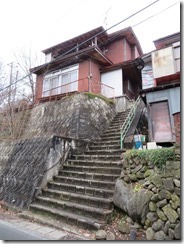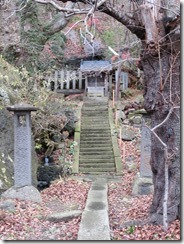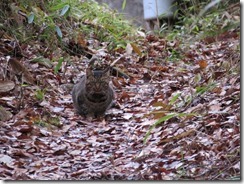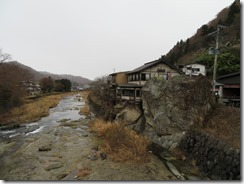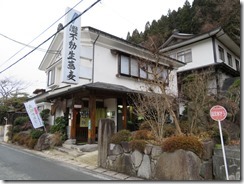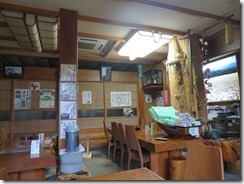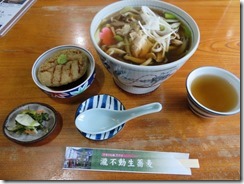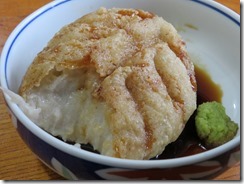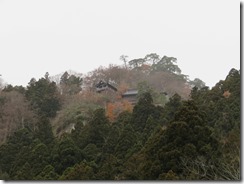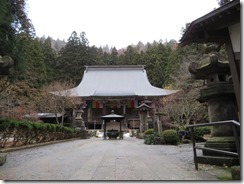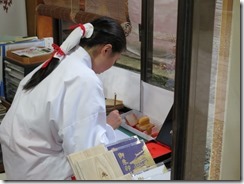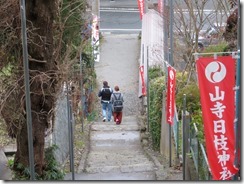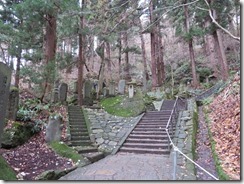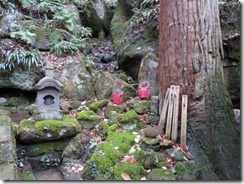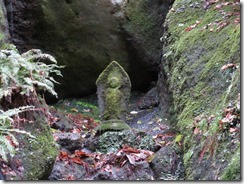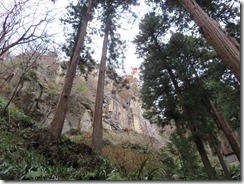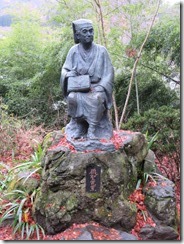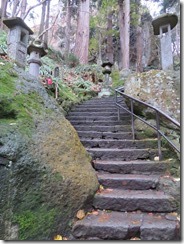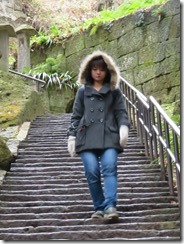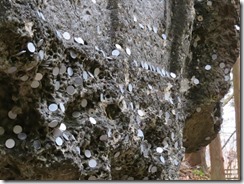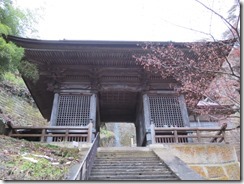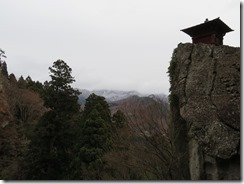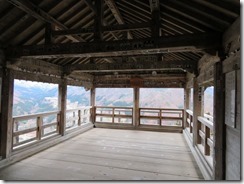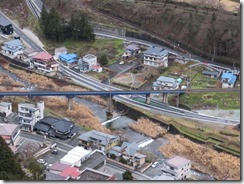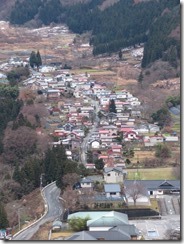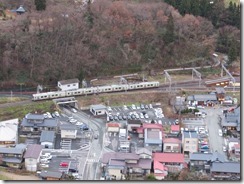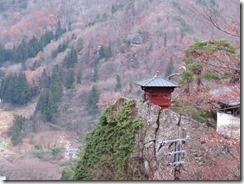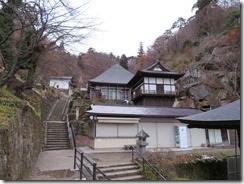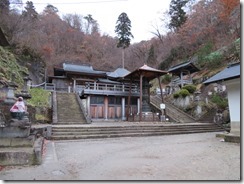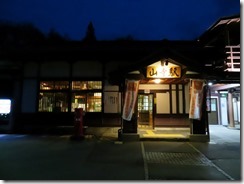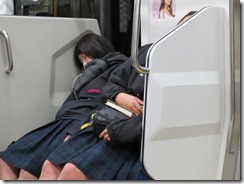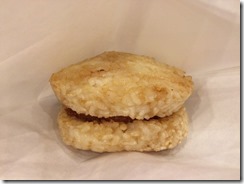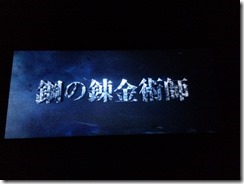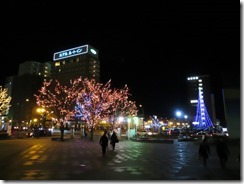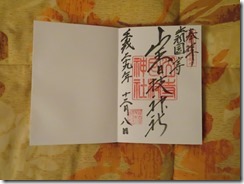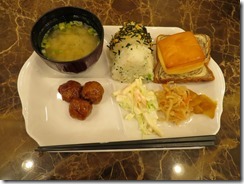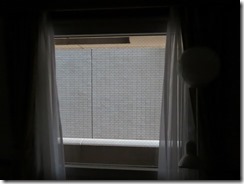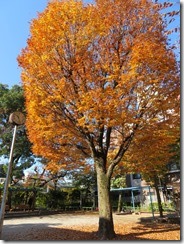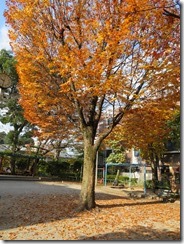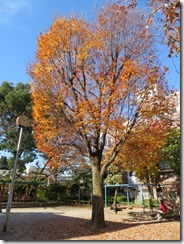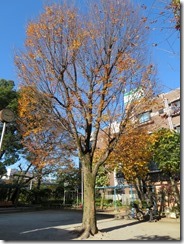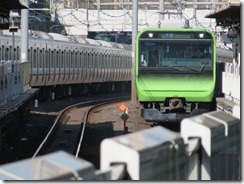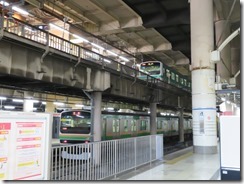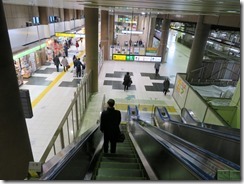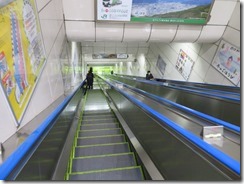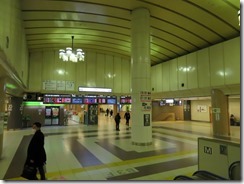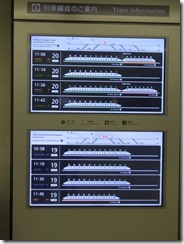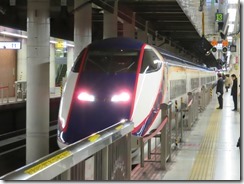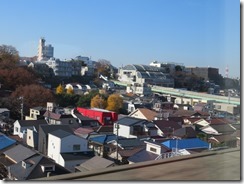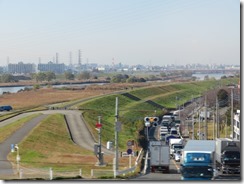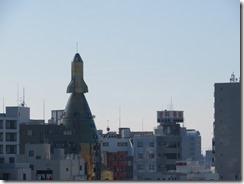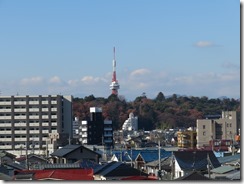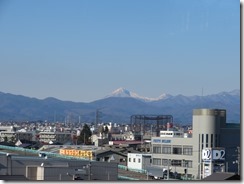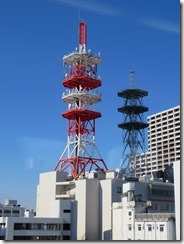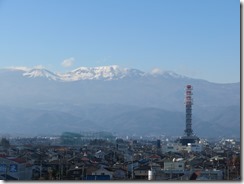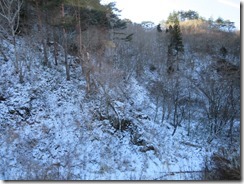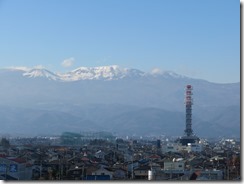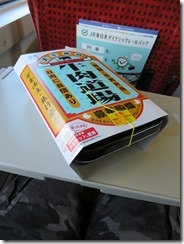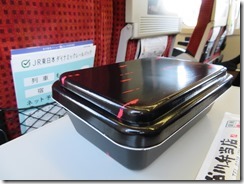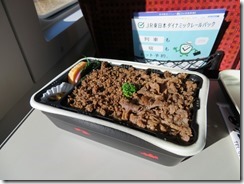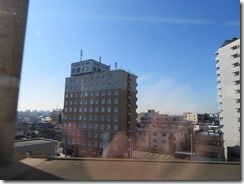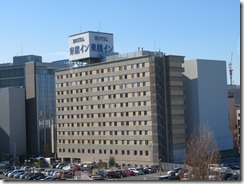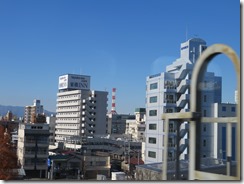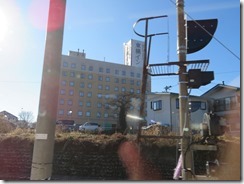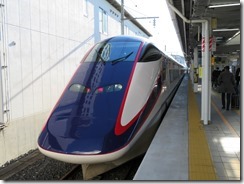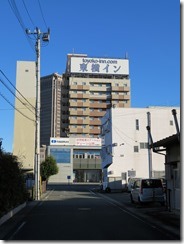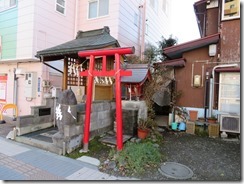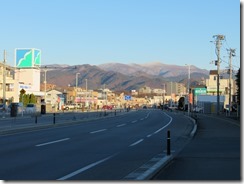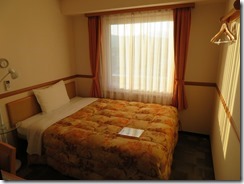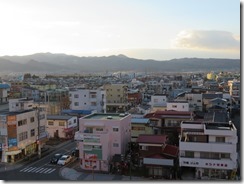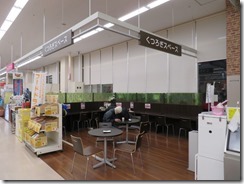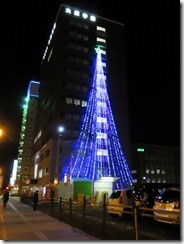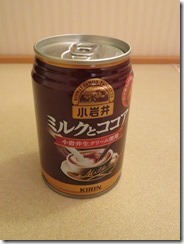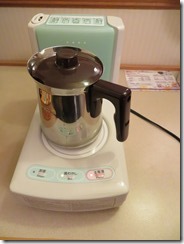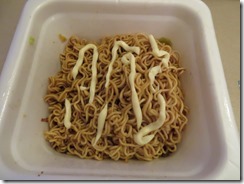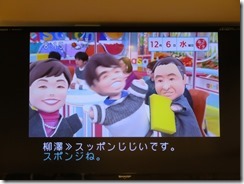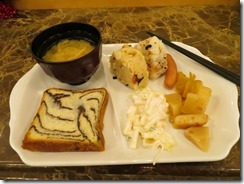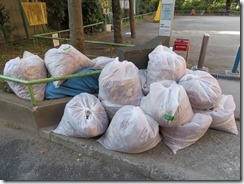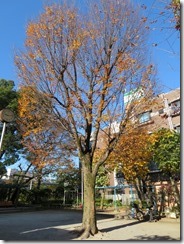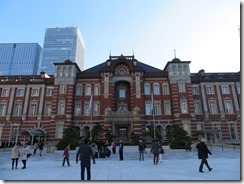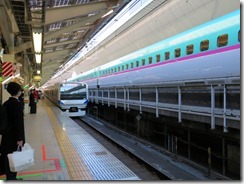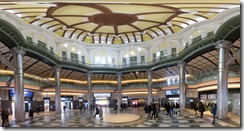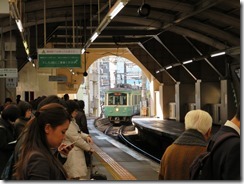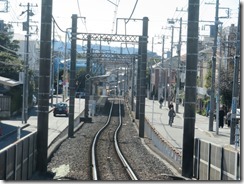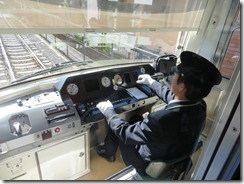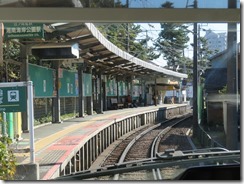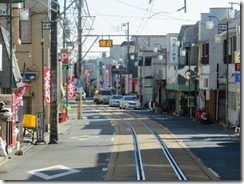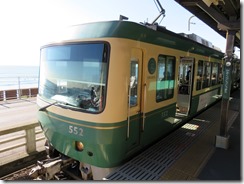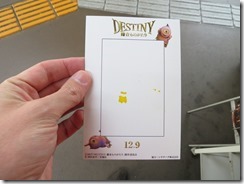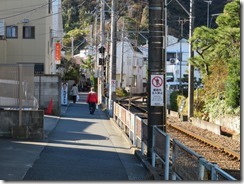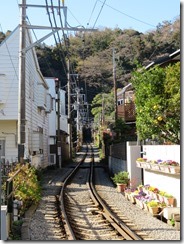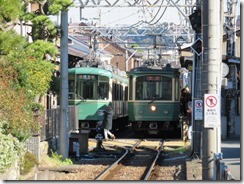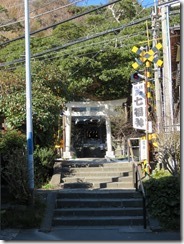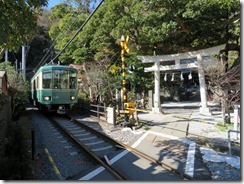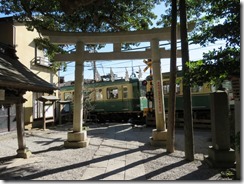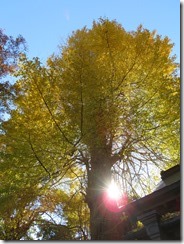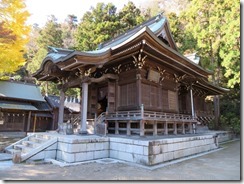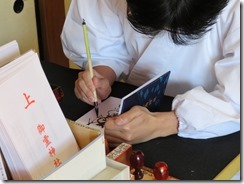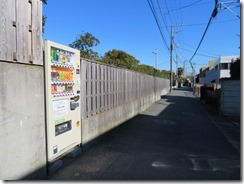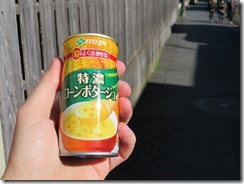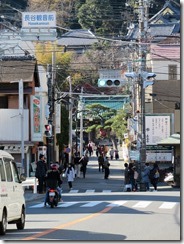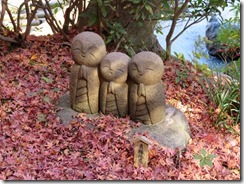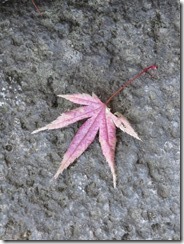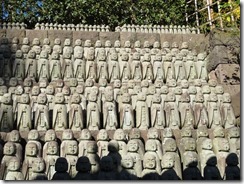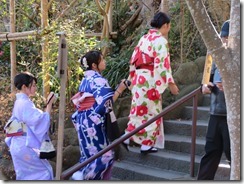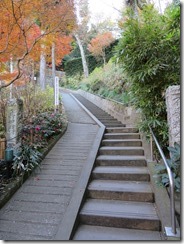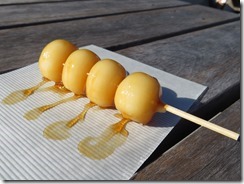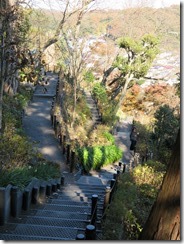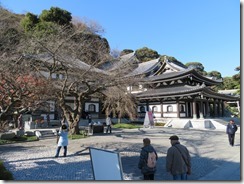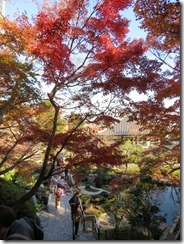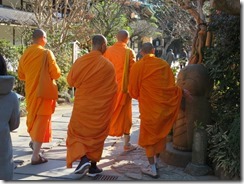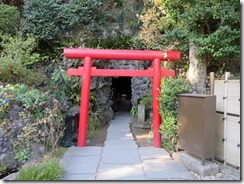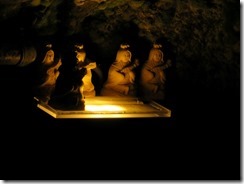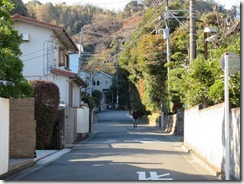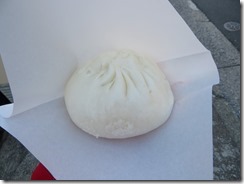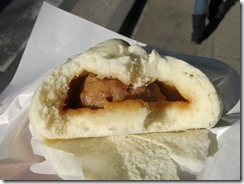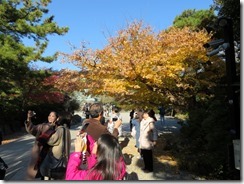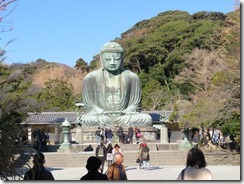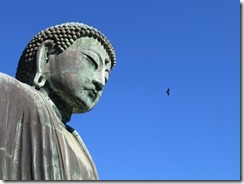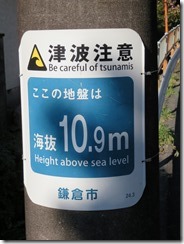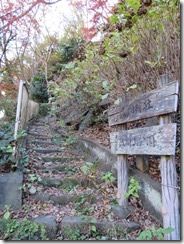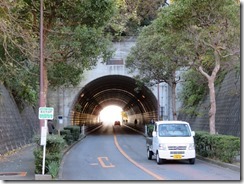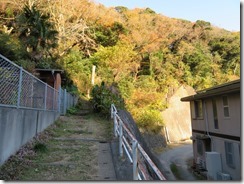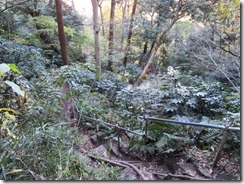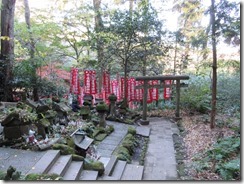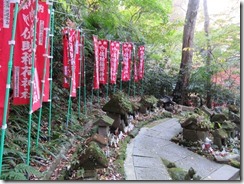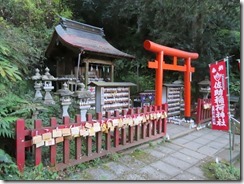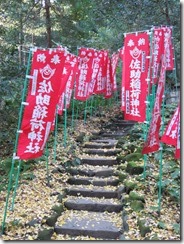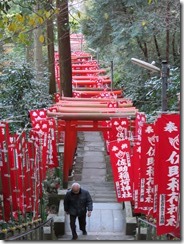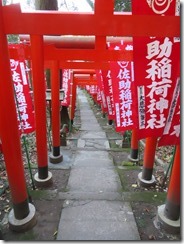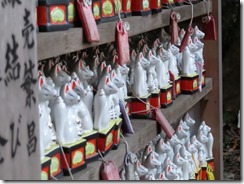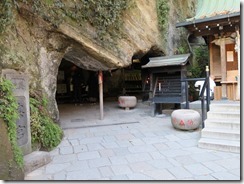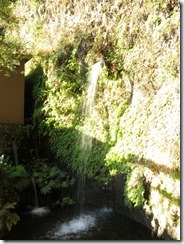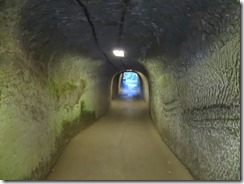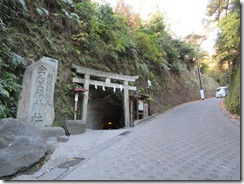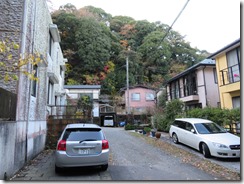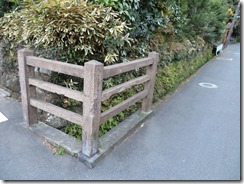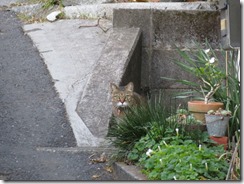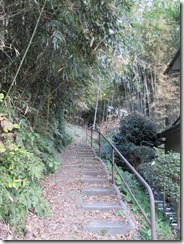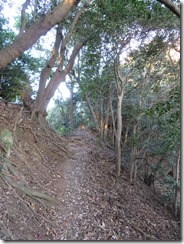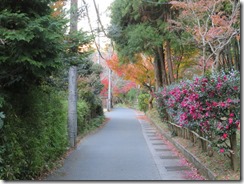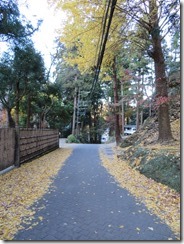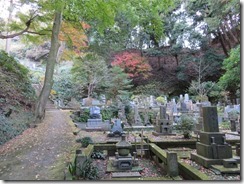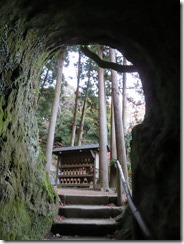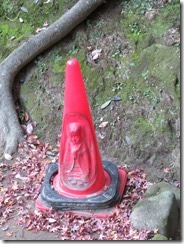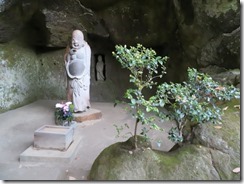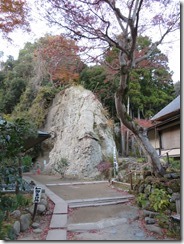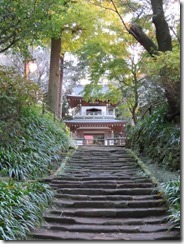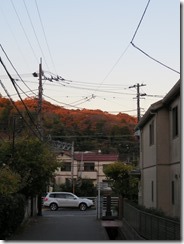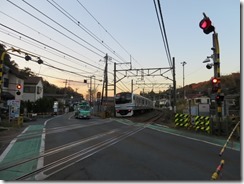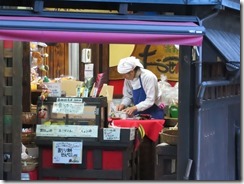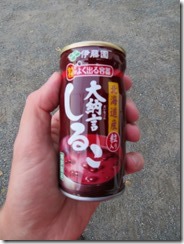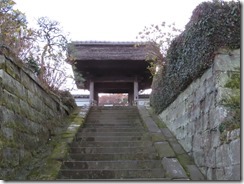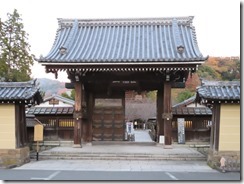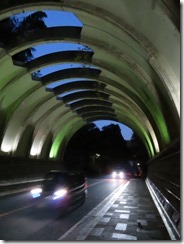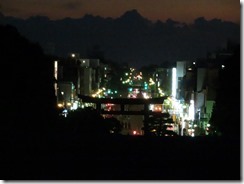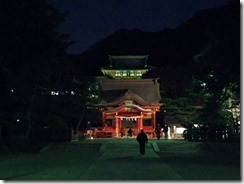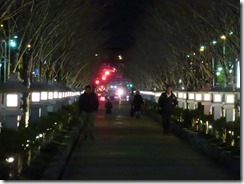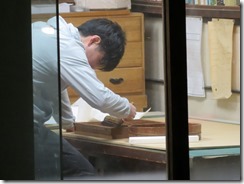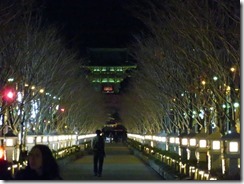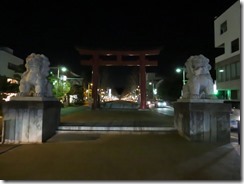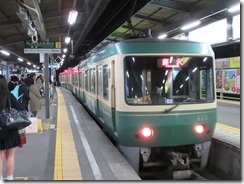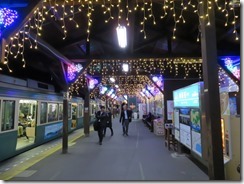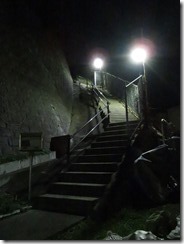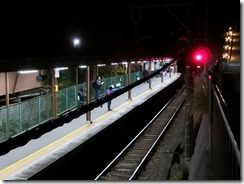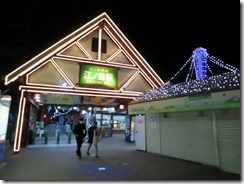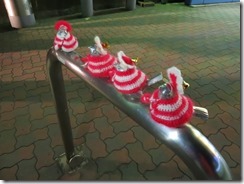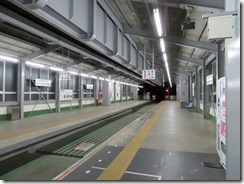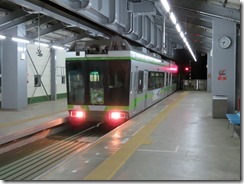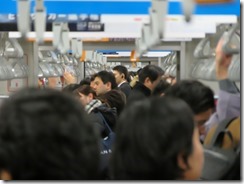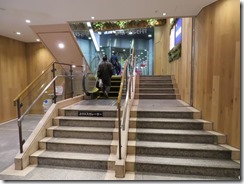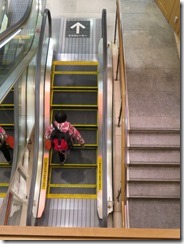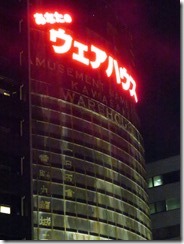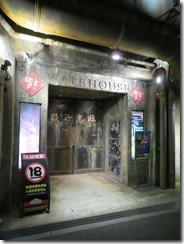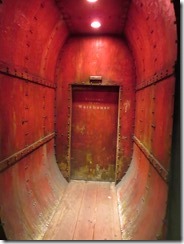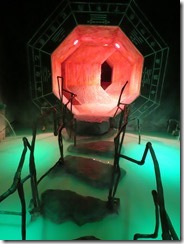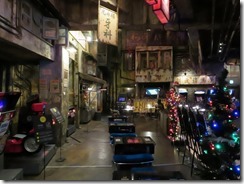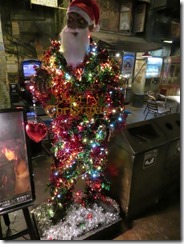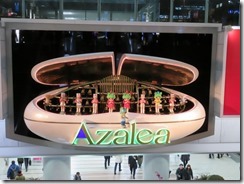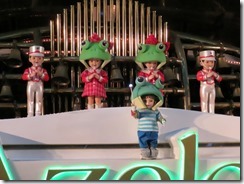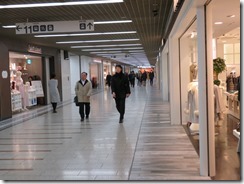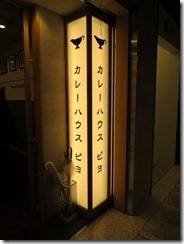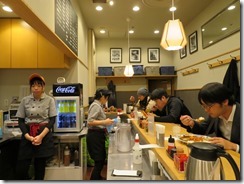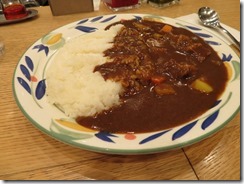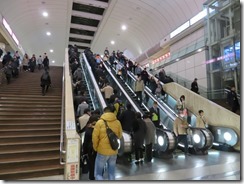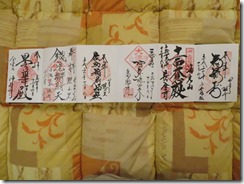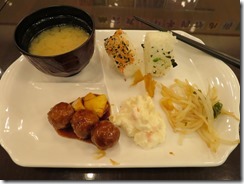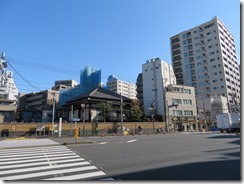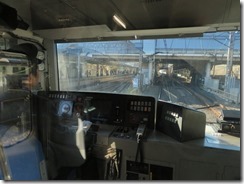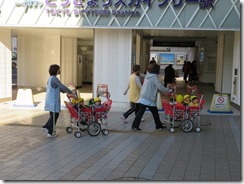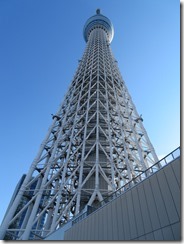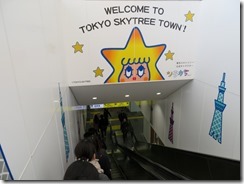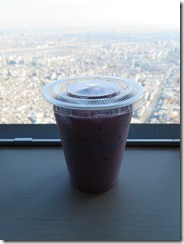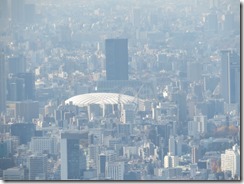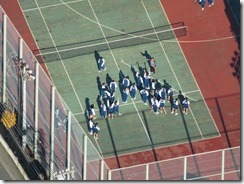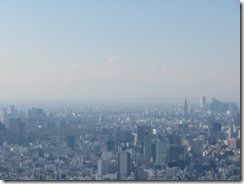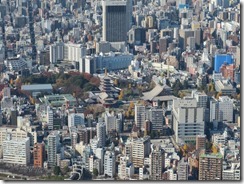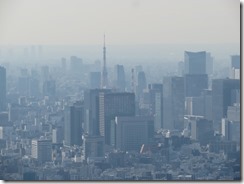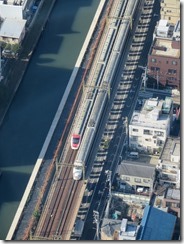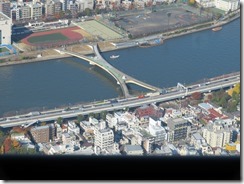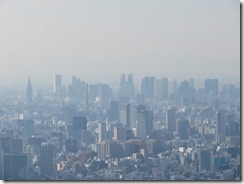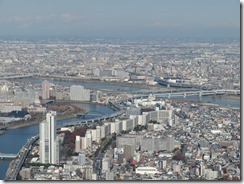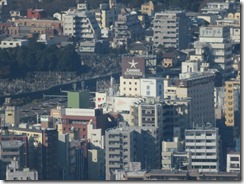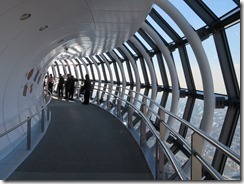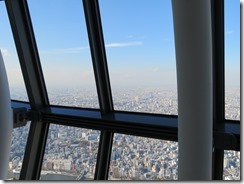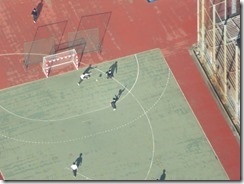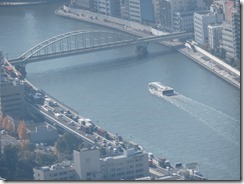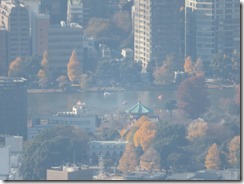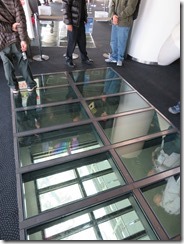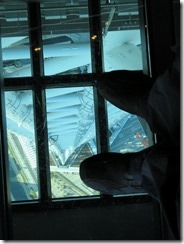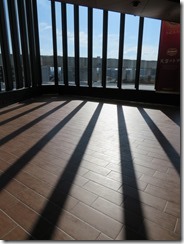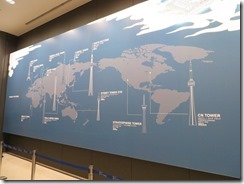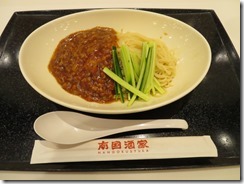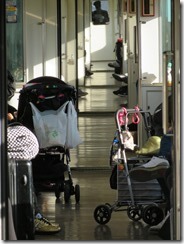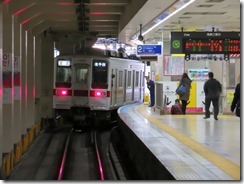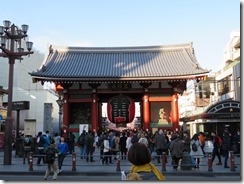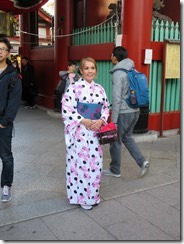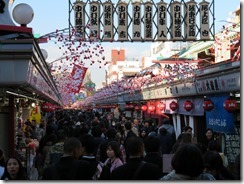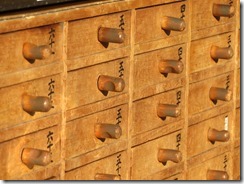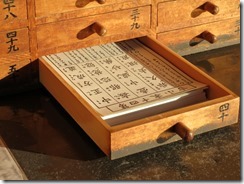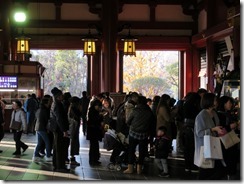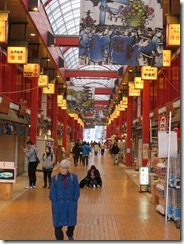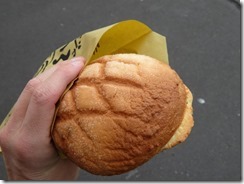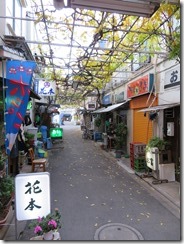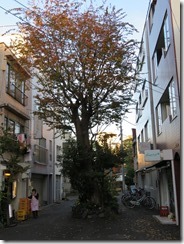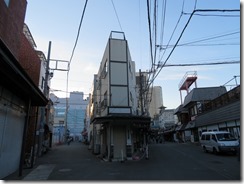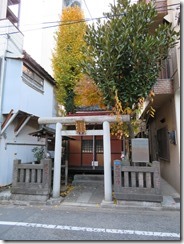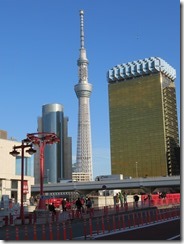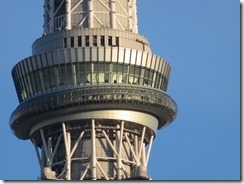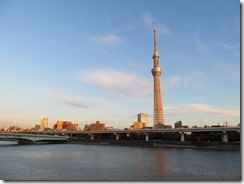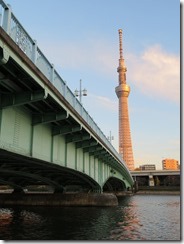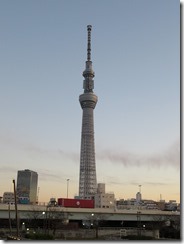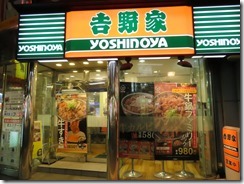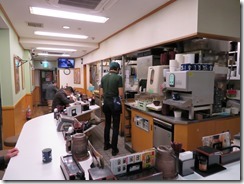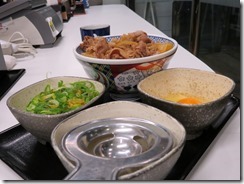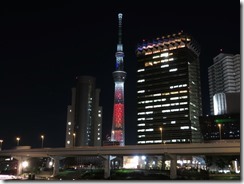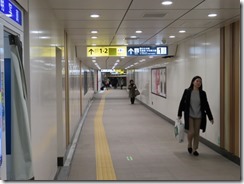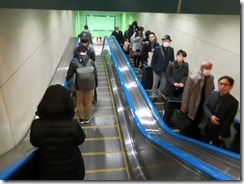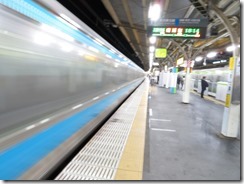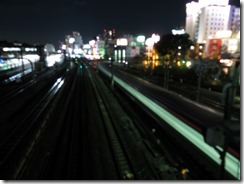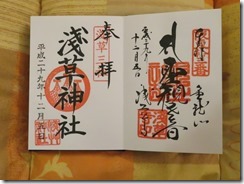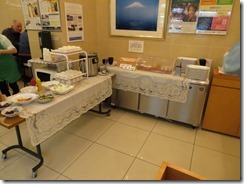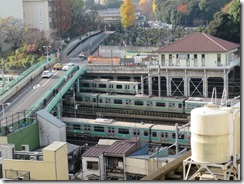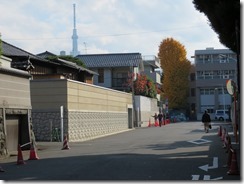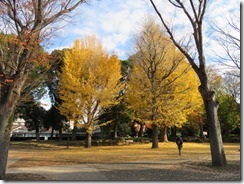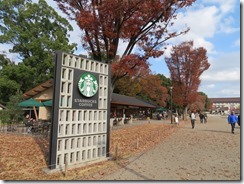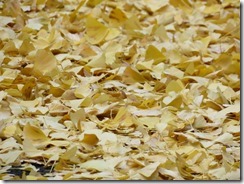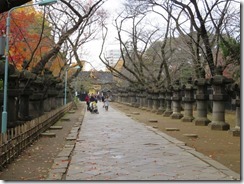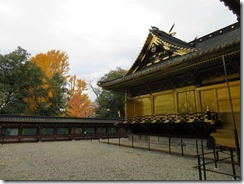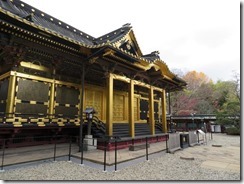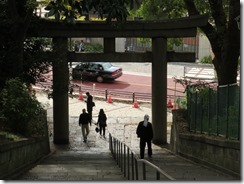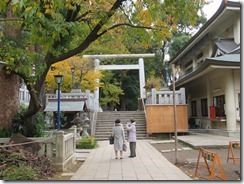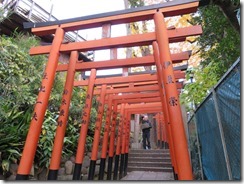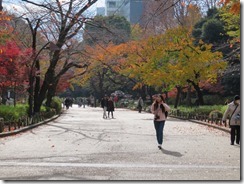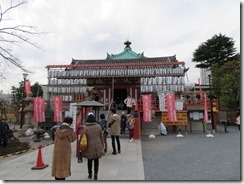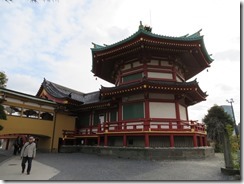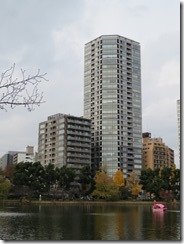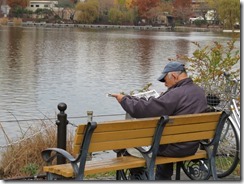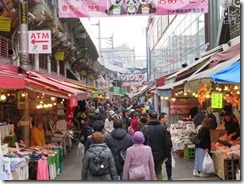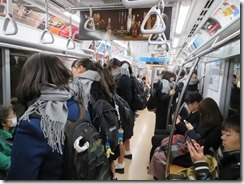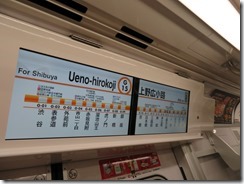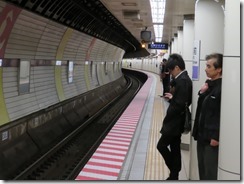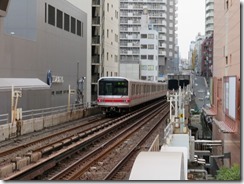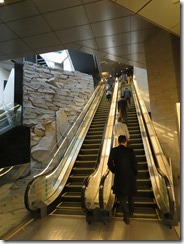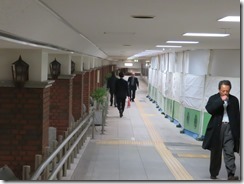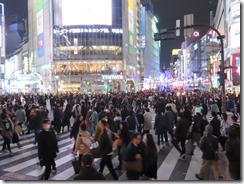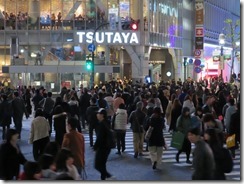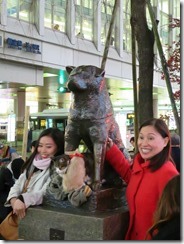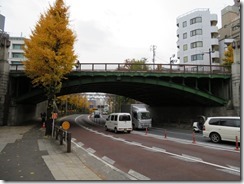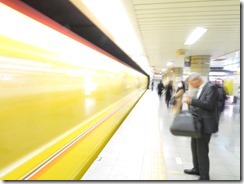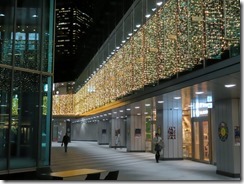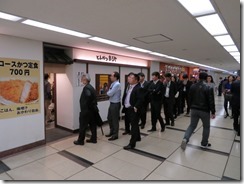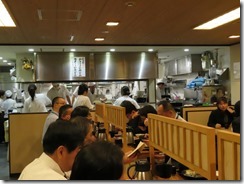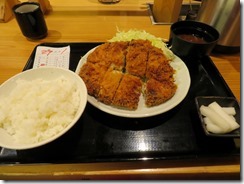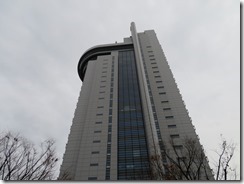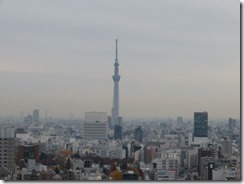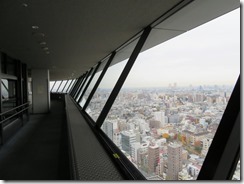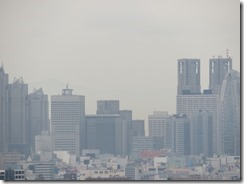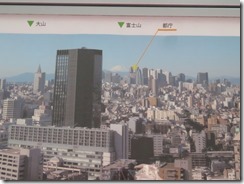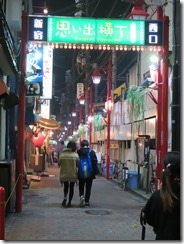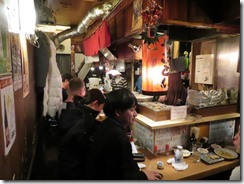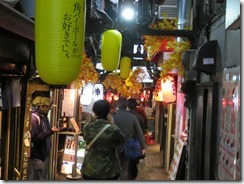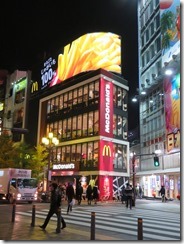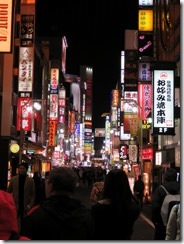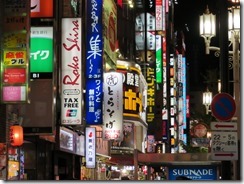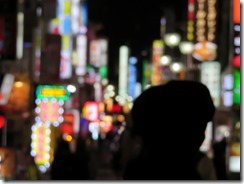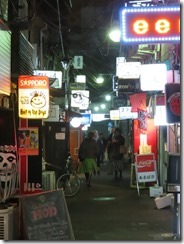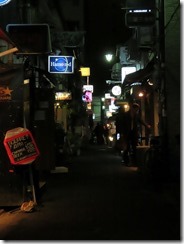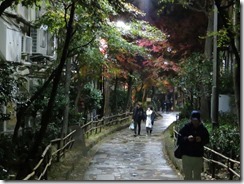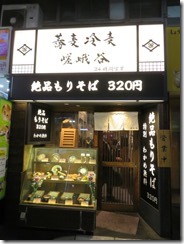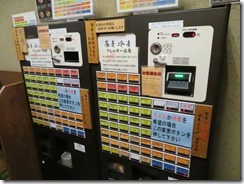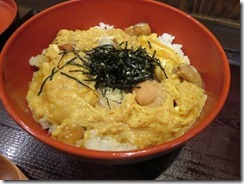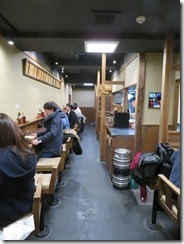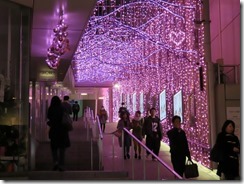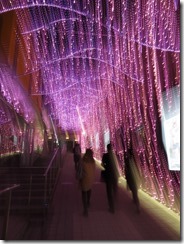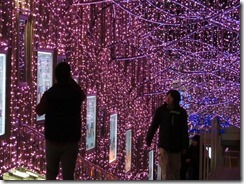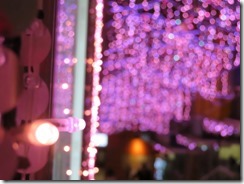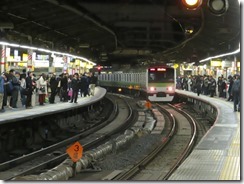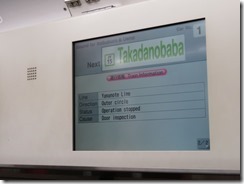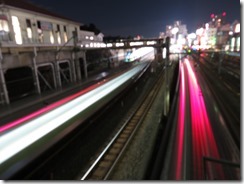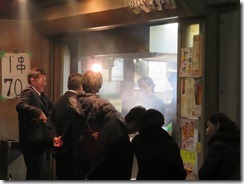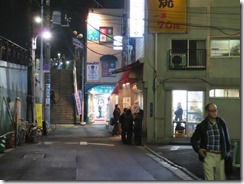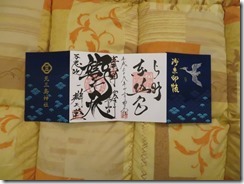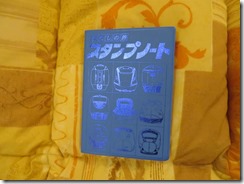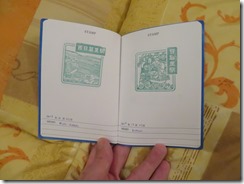Before I start, a letter to my mother: The fact that you’re reading this post means I survived to write it. I didn’t get hurt, or break a leg, or even skin my knees. Please keep that in mind as you read, and especially as you look at the pictures. =)
I got my current camera for Christmas last year. According to the manual, it’s capable of taking about three hundred photos on a single battery charge, and it came with… a single battery (unlike my prior camera, which used regular AAs). In real life, it surprisingly seems to actually get better performance than that, but just to be on the safe side, I bought an extra two batteries. On this trip, I’ve frequently had to use all three batteries every day. Whew.
So, today, I headed out to do the thing I specifically came to Yamagata in order to do: visit Yama-dera. But first, it turned out there was something else in the area I wanted to do. I watched an anime called “Tetsuko no Tabi”, based on a manga of the same name, which is about a manga writer being taken around the country to document (as a manga) the travels of a Japanese travel writer who literally does nothing but travel on trains – in fact, he’s visited every single JR station in the country. It’s non-fiction – which is to say, the travel writer is real, and the manga writer in the manga is the one who’s writing the manga. Or rather, wrote, because the manga “Tetsuko no Tabi” is the manga that she’s writing.
But anyway, the point is, in this anime, they visit a very nice looking waterfall near a station called Omoshiroyamakogen Station. I’d slapped it on my map of stuff I’d like to do in Japan as a “could be interesting, but a little pointless to travel there just to do that”. It wasn’t until late in my planning stages that I realised it was literally the next station down the train line from Yama-dera, which was firmly on my list of stuff I absolutely had to do. After a bit more research, I discovered there’s actually a walking track connecting the two stations, down the extremely picturesque Momiji River Gorge. So, that’s what I did first. (To be more precise, the gorge reaches about a third of the way – the rest of the way is along a quiet country road, almost as picturesque.)
So, I got up a bit earlier, had breakfast, and headed out, because I needed to be on the train at a bit after 8:50, since the next one wouldn’t be for another two hours. I was catching the Senzan Line, which connects Yamagata and Sendai – the train’s name is a combination of both names; “sen” from “Sendai” and “zan” from “Yamagata”, because the “yama” in “Yamagata” can also be read as “san” or “zan”. It means “mountain” (hence “Fujisan” and “Fujiyama”).
It was… quite chilly. Today’s the only day on my trip so far that was forecast as being rainy before I arrived in Japan, and it certainly dawned plenty cloudy, and was even raining when I left the hotel – very gently, though, so it could have even been just heavy fog. According to Wikipedia, Yamagata averages eighteen days of snow in December, so I figured I had better than even odds of seeing snow here (assuming the snow days are randomly distributed across the month, which is probably a bad assumption). The weather app was telling me 3°, though depending on when I looked at it, the stated maximum for the day was 0°, so I’m not really sure where it was 3°. The Senzan trains have manual open/close buttons on the doors rather than opening them all automatically, and the locals clearly had the habit of pushing open, then pushing close again before stepping out, so that the door would close right behind them.
Once we left Yamagata, I started seeing snow all around the tracks. By the time we arrived in Omoshiroyamakogen, there was snow everywhere, all over the ground. Much happy. I had a brief moment of concern when it took a worryingly long time for the door buttons to light up after pulling into the station, but fortunately they lit up before the train left again, so I hopped off. Carefully – not really planning to slip over first thing. According to a sign on the platform, the station has an elevation of 440 metres above sea level.
I had a bit of fun crunching around for a bit, then headed off to do some sightseeing. There was a flight of stairs just behind the platform with an arrow saying “Arare Falls” so I popped down to take a look. Pretty nice, lots of snow, and I’m about 90% sure there were animal tracks in the snow. Also, there was a bridge down the bottom with a perfect fresh covering of snow – which, on the downside, obscured the gaps between the bridge slats. I carefully made my way across, took some photos, and headed back up to the platform.
Then I headed up the stairs. At the top was a chairlift that looks creepily overgrown. I couldn’t quite tell if they haven’t opened in years, or if they just haven’t opened for this season yet, but honestly, my gut says the former. A little bit creepy – I was half expecting Jason to jump out an murder me.
Headed over the overpass to reach the start of my planned walk. When I got to the top, I may or may not have discovered a sign saying the path was closed for the winter. But the next train back wouldn’t be coming for another two hours, so that’s all we’ll say about that.
It was, I’ve gotta say, a spectacular walk. Snow all the way through. Water falls here and there. Even animal tracks in the snow (and at one point I saw some yellow snow – but don’t worry, I didn’t eat it). At one point, the path was completely hidden by fallen snow, and I only found it again by following the animal tracks. Icicles aaaaall over the place. For much of the way along, the walking path was little more than a ledge cut into the side of the gorge, but every now and then, the path would cross over the river on a bridge – and the bridge supports and various stairways looked very worryingly like temporary scaffold supports. At one point, I passed a bunch of curved scaffold poles just lying on the ground, but when I walked a little further, I found a bridge that was literally bent in the middle, with the same curve as those discarded poles. Makes me wonder what’s been standing on that bridge.
Some of the later bridges were suspension bridges instead, and they had signs posted on them saying “It’s dangerous, so please cross quietly”, which was very reassuring. The bridge approach paths were basically boards with cross pieces nailed on to prevent slippage, and I worked out the knack of sliding my toe or heel into the crosspiece before putting my weight on it – which was lucky, because on one of them, the collected snow turned out to be a bit more solid than most, and my foot slid clean off. One later bridge, the snow was so deeply piled that I had to sweep it off the bridge with my foot to get a sure footing.
Ah, the joys of someone from a temperate climate having to individually re-derive all the habits that people who live in the snow are taught from birth.
The train line actually runs along the lip of the gorge pretty much the entire way, but I didn’t notice when I was on the train because I was looking out the front windows at the time. While I was in the gorge, one of the trains sounded its horn as it passed over my head, which gave me an absolute heart attack, because for a moment it sounded like the noise of some kind of large animal.
Eventually, I reached the end of the gorge. The path out was up a fairly steep flight of steps, then through a culvert under the railway lines, which I shared with none-too-small tributary of the Momiji River. I was raised up a bit on a metal platform, but luckily the water wasn’t too much deeper, or I would have been sharing the platform as well as the culvert. Actually, many blogs I found of other people doing this walk mentioned that water frequently crossed the path, requiring wading. I was hoping I wouldn’t have to, since it’s winter, and decided the first place that I couldn’t easily pass through, I’d turn back to the station. Fortunately, any water crossing the path was never deep enough to even come close to the tops of the soles of my shoes.
It’s amazing what a difference seasons make, though. In peoples’ photos from spring and summer, it’s an incredibly vivid green. In autumn, it’s burning reds and yellows. For me, though, in winter, it was a very stark contrast of white and browns and greys.
But anyway, after passing through the culvert, I was back on the road, with about four and a half kilometres to stroll back to the town of Yamadera. And yes, like I said before, that’s two thirds of the distance between Omoshiroyama and Yamadera. Yes, the gorge was about two kilometres long – it sure didn’t feel like that. It was, I confess, quite nice to finally be away from the sounds of the water that had been my constant companion since I started about two and a half hours previously.
It was quite a nice stroll back, though, sometimes through dark copses of pines, and sometimes through bare patches of deciduous trees sans leaves (given the name of the river I’d been walking along, quite possibly they were momiji, Japanese maple). When I reached the halfway mark back to town, it started to actually snow. Good thing I brought my new puffy jacket. I did, however, have to remember to suppress the urge to blow fallen snow off my camera, because blowing on it makes it melt.
I’d also bought a CalorieMate block at the supermarket last night to have as snacks during the walk, so I had one as a snack during the walk. CalorieMate is a Japanese brand of energy bar, basically, with a texture something like a piece of dense shortbread. They also sell varieties in jelly and drink form. One thing that I find interesting is that the block form was first introduced in cheese flavour in 1983, but it took them until 2014 to release a “plain” flavour.
Interestingly, at no point on this walk did I lose mobile reception. Ah, the wonders of modern technology.
Finally reached Yamadera town a bit under four hours after I’d started walking. Guess I can blame that rather long time on stopping to take photos. Discovered shortly before entering town that the road I was on was actually closed to traffic, which I suppose explains the lack of any.
I had a look around for somewhere to have lunch, but many places seemed to be closed, so I pulled out Google and searched for the local Yamadera specialties. Google suggested soba – noodles made from buckwheat – and also suggested one particular place which also sold kaimochiage, a kind of fried buckwheat dough dumpling. I headed there and found it open, so I got me some chicken soba, and a kaimochiage. Most tasty. Very warming. I was the only customer there, though.
Then it was at last time to head for Yama-dera. Founded in 860 AD is a branch temple of Enryaku-ji in Kyoto, its official name is actually Risshaku-ji – Yama-dera is a nickname meaning “mountain temple”, because it’s quite literally built up the side of a mountain. There’s precisely a thousand stairs from the street to the innermost sanctuary, though to be honest, I didn’t count them to check. On the way up, there’s a whole bunch of other things to see, perhaps most interestingly Godai Hall, an open sided hall right up near the top with a spectacular view over the town.
I hung around up there taking photos of the view for a bit… until suddenly nature started calling. There was a toilet near the bottom with a sign saying “no toilets past this point”, but as always seems to happen, I didn’t need to go then. Against my better judgement, I decided to climb the remaining steps to the top, and I got within sight of it before my need became too urgent, and I wound up rushing down the steps at a breakneck pace.
I’m not sure how much detail I can get into without losing the G-rating on my blog, or my ability to show my face in public back home – I rather suspect I’ve said too much already. I’m just gonna say I didn’t actually break my neck, and leave it at that.
And by that time the sun had well and truly set – for that matter, it was already getting pretty dark on my way down – so I headed back to the train station, and back to the hotel.
Decided to reward myself for having two early nights in a row by going to see a movie in the cinema near my hotel – specifically, the new Fullmetal Alchemist live-action movie (or, as it’s called here, Hagane no Renkinjutsushi, which just means “Alchemist of Steel”). Though I guess seeing a movie makes it a late night after all. It was a pretty good movie. Managed to follow the plot largely because I knew it already – it’s a slightly modified version of the first part of the manga’s story. Had dinner from the cinema concession stand – a rice burger (which is to say, it’s a chicken burger, but with rice in place of the bun). And a Twix I’d brought from Australia for dessert.
It’s my holiday and I’ll have a late night if I want to…
Weather outside is currently -1°. Rather glad I’m in here.
Today’s photo count: One thousand, one hundred and sixty-nine. And a video. Like the other day, that wasn’t even difficult. I’m starting to wonder if I really never have broken the three-digit mark before.
Today’s step count: 17,727 steps, or 11.9km.
Today’s goshiun count: Just the one, from Yama-dera
Today’s stamp count: Nil. I couldn’t find the one at Omoshiroyamakogen, and there was no attendant there to ask about it. I would have expected there to be one at Yamadera, though, but again I couldn’t find it, and the station ticket office had already closed. Sad face.

